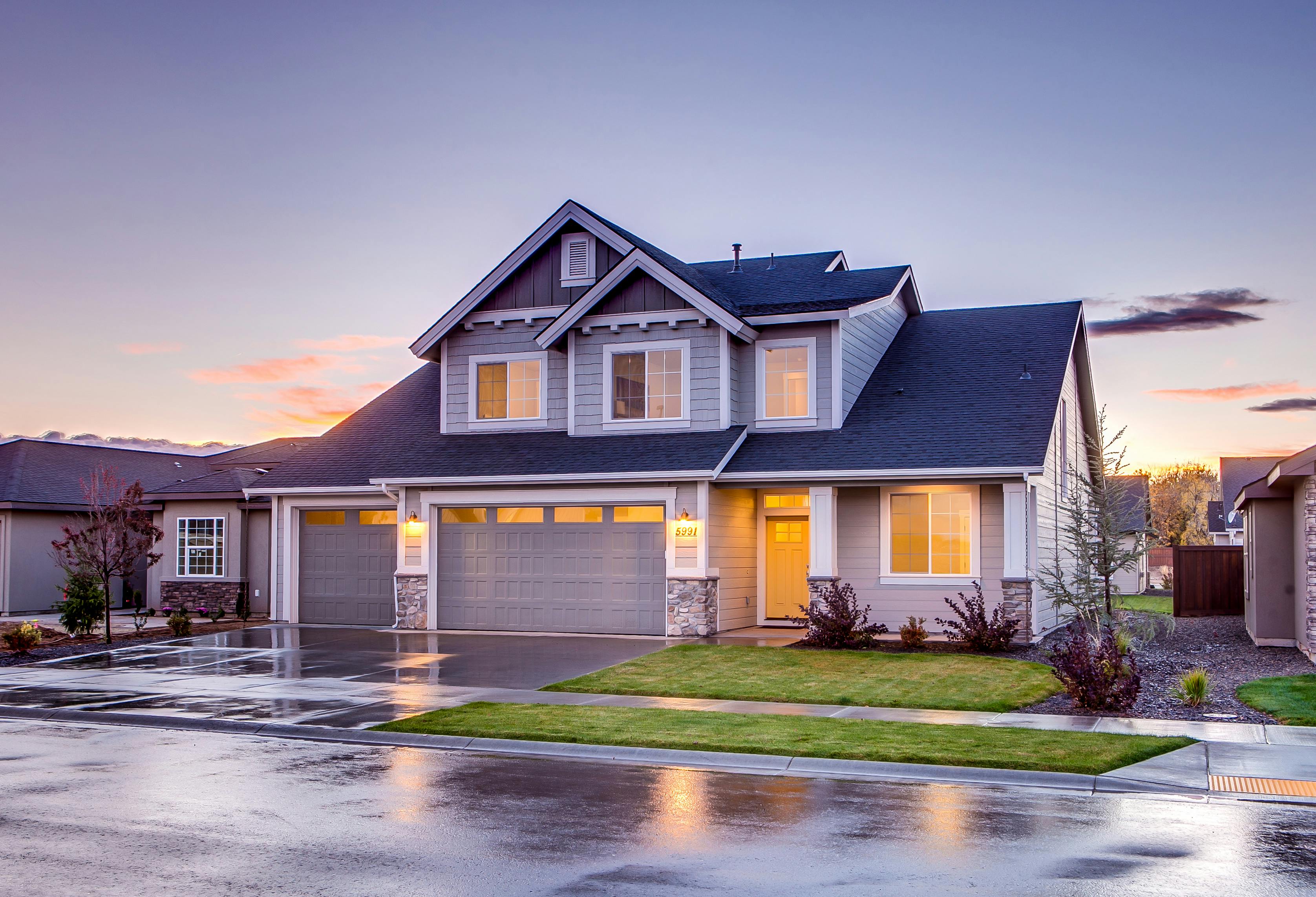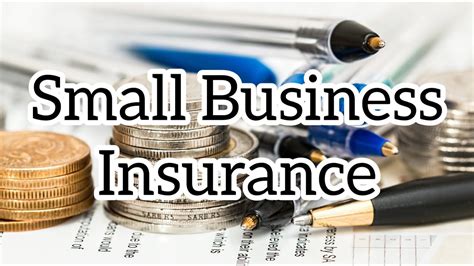Property Insurance For Business

Property insurance is an essential component of any business's risk management strategy. It provides financial protection against potential losses and damages to a company's physical assets, such as buildings, equipment, inventory, and other valuable possessions. In today's dynamic business landscape, where unforeseen events like natural disasters, theft, or accidents can occur, having adequate property insurance coverage is crucial. This article delves into the intricacies of property insurance for businesses, exploring its importance, coverage options, and the steps involved in obtaining the right policy.
Understanding Property Insurance for Businesses

Property insurance, often referred to as commercial property insurance, is designed to safeguard businesses against a wide range of risks that could lead to significant financial losses. It covers the physical assets that a business owns or leases, including its premises, machinery, stock, and even outdoor fixtures. The primary objective of property insurance is to provide financial stability and peace of mind by ensuring that businesses can recover and rebuild after a covered loss event.
Businesses face numerous risks, from fires and storms to vandalism and theft. Property insurance acts as a safety net, offering financial compensation to cover repair or replacement costs. It's not just about physical structures; it also extends to the contents within, ensuring that businesses can continue their operations with minimal disruption.
Key Coverage Options in Property Insurance
Property insurance policies offer a comprehensive range of coverage options tailored to meet the unique needs of different businesses. Some of the key coverage components include:
- Building Coverage: This covers the physical structure of the business premises, including offices, warehouses, and retail spaces. It ensures that the building can be repaired or rebuilt if damaged by a covered event.
- Business Personal Property Coverage: This coverage extends to the contents within the business premises, such as furniture, electronics, inventory, and supplies. It provides financial protection for the replacement or repair of these items.
- Business Income Coverage: Also known as business interruption insurance, this option covers the loss of income and additional expenses incurred when a business is unable to operate due to a covered event. It helps businesses maintain their financial stability during temporary shutdowns.
- Equipment Breakdown Coverage: This coverage provides protection against sudden and accidental equipment breakdowns, ensuring that businesses can repair or replace critical machinery and equipment.
- Ordinance or Law Coverage: In the event of a total loss, this coverage helps businesses comply with updated building codes and regulations when rebuilding their premises.
- Extra Expense Coverage: This option covers the additional expenses incurred during the restoration period, such as temporary relocation costs and increased costs of operation.
Assessing Property Insurance Needs

Determining the right property insurance coverage for a business involves a thorough assessment of its unique risks and needs. Factors such as the type of business, location, and the value of assets play a significant role in this process. Here’s a closer look at some key considerations:
Type of Business
Different industries and business models face varying risks. For instance, a manufacturing business may require extensive coverage for its machinery and equipment, while a retail store might prioritize coverage for its inventory and display fixtures.
Location and Natural Disasters
The geographical location of a business is a critical factor. Areas prone to natural disasters like hurricanes, floods, or earthquakes may require specialized coverage to protect against these specific risks. Understanding the historical and potential future risks associated with a location is essential.
Value of Assets
Accurately assessing the value of a business’s assets is crucial. This includes not just the physical structures but also the contents and any unique or specialized equipment. Underestimating the value can lead to inadequate coverage, while overestimating may result in unnecessary expenses.
Coverage Limits and Deductibles
Businesses must carefully consider their coverage limits and deductibles. Higher limits provide broader protection but also result in higher premiums. Deductibles, on the other hand, represent the portion of a claim that the business pays out of pocket. Choosing the right balance between limits and deductibles is a strategic decision.
Obtaining Property Insurance: A Step-by-Step Guide
Securing the right property insurance policy involves a systematic approach. Here’s a step-by-step guide to help businesses navigate the process effectively:
1. Assess Your Business’s Risks
Begin by conducting a thorough risk assessment. Identify the potential hazards your business faces, whether it’s natural disasters, theft, or equipment failures. Understanding these risks is the foundation for building an effective insurance strategy.
2. Evaluate Your Current Coverage (if applicable)
If your business already has property insurance, review the policy to ensure it aligns with your current needs. Assess whether the coverage limits, deductibles, and exclusions are still appropriate. Regular policy reviews are essential to ensure ongoing protection.
3. Determine the Right Coverage Options
Based on your risk assessment and business needs, identify the specific coverage options that provide the best protection. Consider building coverage, business personal property coverage, business income coverage, and any additional endorsements that address your unique risks.
4. Compare Quotes from Multiple Insurers
Shop around and obtain quotes from multiple insurance providers. Compare not just the premiums but also the coverage limits, deductibles, and any exclusions. Look for insurers with a strong reputation and financial stability to ensure they can provide reliable coverage.
5. Work with an Insurance Professional
Consider partnering with an experienced insurance broker or agent who specializes in commercial insurance. They can guide you through the process, explain complex policy terms, and help tailor a policy that meets your specific needs. Their expertise can be invaluable in navigating the insurance landscape.
6. Understand Policy Exclusions and Limitations
Carefully review the policy’s exclusions and limitations. Be aware of any situations or risks that are not covered by the policy. Understanding these exclusions is crucial to avoid any surprises in the event of a claim.
7. Regularly Review and Update Your Policy
Property insurance needs can evolve over time. Regularly review your policy to ensure it continues to meet your changing business requirements. Update the policy as necessary, especially after significant changes or expansions.
Real-World Case Studies: Property Insurance in Action
Understanding the practical applications of property insurance can provide valuable insights. Let’s explore two real-world case studies that demonstrate the importance and impact of having adequate property insurance coverage.
Case Study 1: Retail Store’s Recovery After a Fire
A small retail store specializing in electronics was devastated by a fire caused by an electrical malfunction. The store owner had invested heavily in their inventory and had taken out a comprehensive property insurance policy. The policy included coverage for building damage, business personal property, and business income. As a result, the store was able to:
- Quickly repair the damaged premises and reopen within two months.
- Replace their entire inventory, ensuring they could continue serving customers.
- Receive financial support during the downtime, allowing them to maintain their staff and operations.
Case Study 2: Manufacturing Plant’s Response to a Flood
A manufacturing plant located in a flood-prone area experienced significant water damage due to a heavy storm. The plant had obtained a property insurance policy that included coverage for equipment breakdown and ordinance or law. Here’s how the insurance coverage helped:
- The policy covered the cost of repairing and replacing damaged machinery, ensuring the plant could resume production within a reasonable timeframe.
- It also provided funding for the plant to comply with updated building codes and regulations, a requirement for rebuilding in flood-prone areas.
- The plant was able to maintain its operations and minimize downtime, thanks to the extra expense coverage that covered temporary relocation costs.
The Future of Property Insurance: Trends and Innovations

The property insurance industry is continually evolving to meet the changing needs and risks of businesses. Here are some emerging trends and innovations that are shaping the future of property insurance:
1. Advanced Risk Assessment Tools
Insurance companies are leveraging advanced technologies and data analytics to assess risks more accurately. These tools can predict potential hazards, such as natural disasters or equipment failures, allowing businesses to make informed decisions about their coverage needs.
2. Customized Coverage Options
Insurance providers are offering increasingly tailored coverage options to meet the unique needs of different businesses. From specialized endorsements for specific industries to flexible coverage limits, businesses can now obtain policies that fit their exact requirements.
3. Focus on Resilience and Prevention
There is a growing emphasis on helping businesses become more resilient in the face of potential risks. Insurance companies are offering risk management services and consulting to help businesses identify and mitigate risks, reducing the likelihood of losses.
4. Integration of Smart Technologies
The integration of smart technologies, such as IoT sensors and predictive analytics, is transforming property insurance. These technologies can monitor and detect potential risks in real-time, allowing for more efficient risk management and potentially reducing insurance premiums for businesses.
5. Sustainable and Green Insurance Solutions
With a focus on sustainability, insurance providers are offering green insurance solutions. These policies incentivize businesses to adopt eco-friendly practices and technologies, often with reduced premiums or additional coverage benefits.
Conclusion: Securing Your Business’s Future
Property insurance is not just a safeguard against potential losses; it’s an investment in the future of your business. By understanding your unique risks, assessing your coverage needs, and obtaining the right policy, you can ensure that your business remains resilient and financially stable in the face of unforeseen events. Remember, the right property insurance policy is tailored to your business, providing the coverage and peace of mind you need to focus on what matters most - growing and thriving in a dynamic business environment.
How often should I review my property insurance policy?
+It is recommended to review your property insurance policy annually or whenever significant changes occur in your business, such as expansion, relocation, or acquisition of new assets. Regular reviews ensure that your coverage remains up-to-date and aligned with your evolving needs.
What happens if I underestimate the value of my assets when obtaining insurance?
+Underestimating the value of your assets can lead to inadequate coverage. In the event of a claim, you may receive less compensation than you need to fully recover and rebuild. It is crucial to accurately assess the value of your assets to ensure you have sufficient coverage.
Can property insurance cover damage caused by earthquakes or floods if my business is located in a high-risk area?
+Yes, property insurance policies can include coverage for natural disasters such as earthquakes and floods. However, it is important to carefully review the policy’s exclusions and limitations, as some insurers may require separate endorsements or policies for these specific risks. Working with an insurance professional can help you navigate these complexities.



